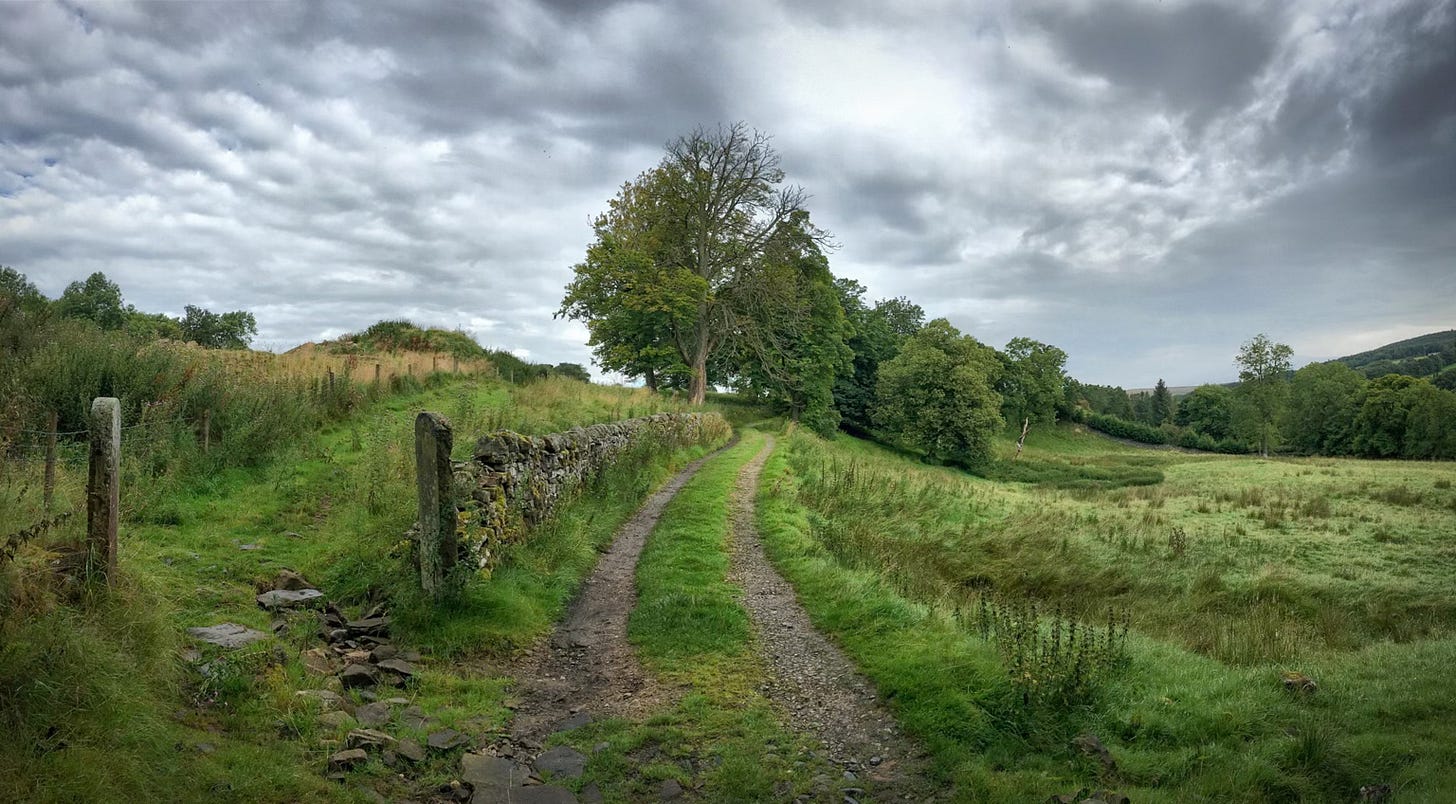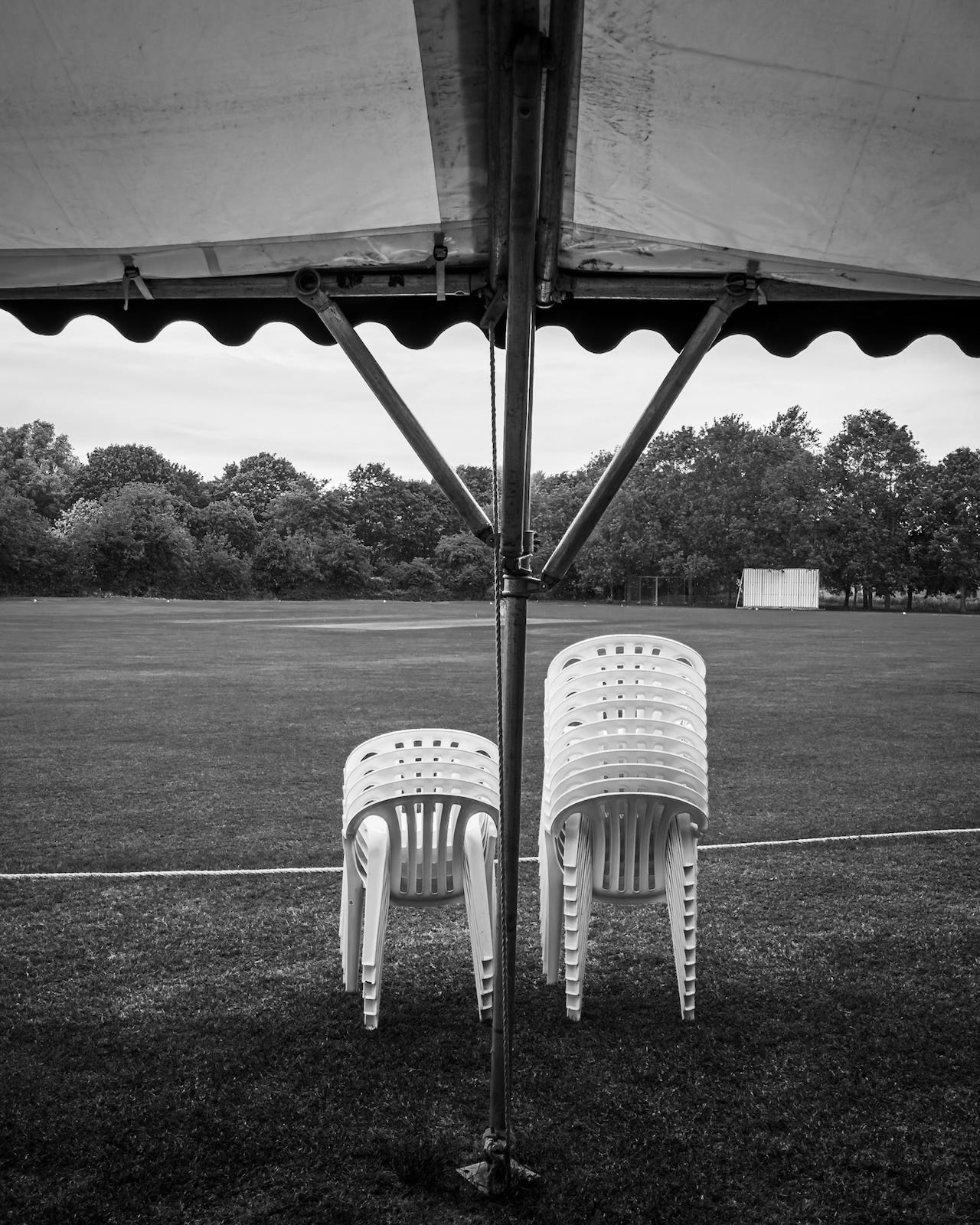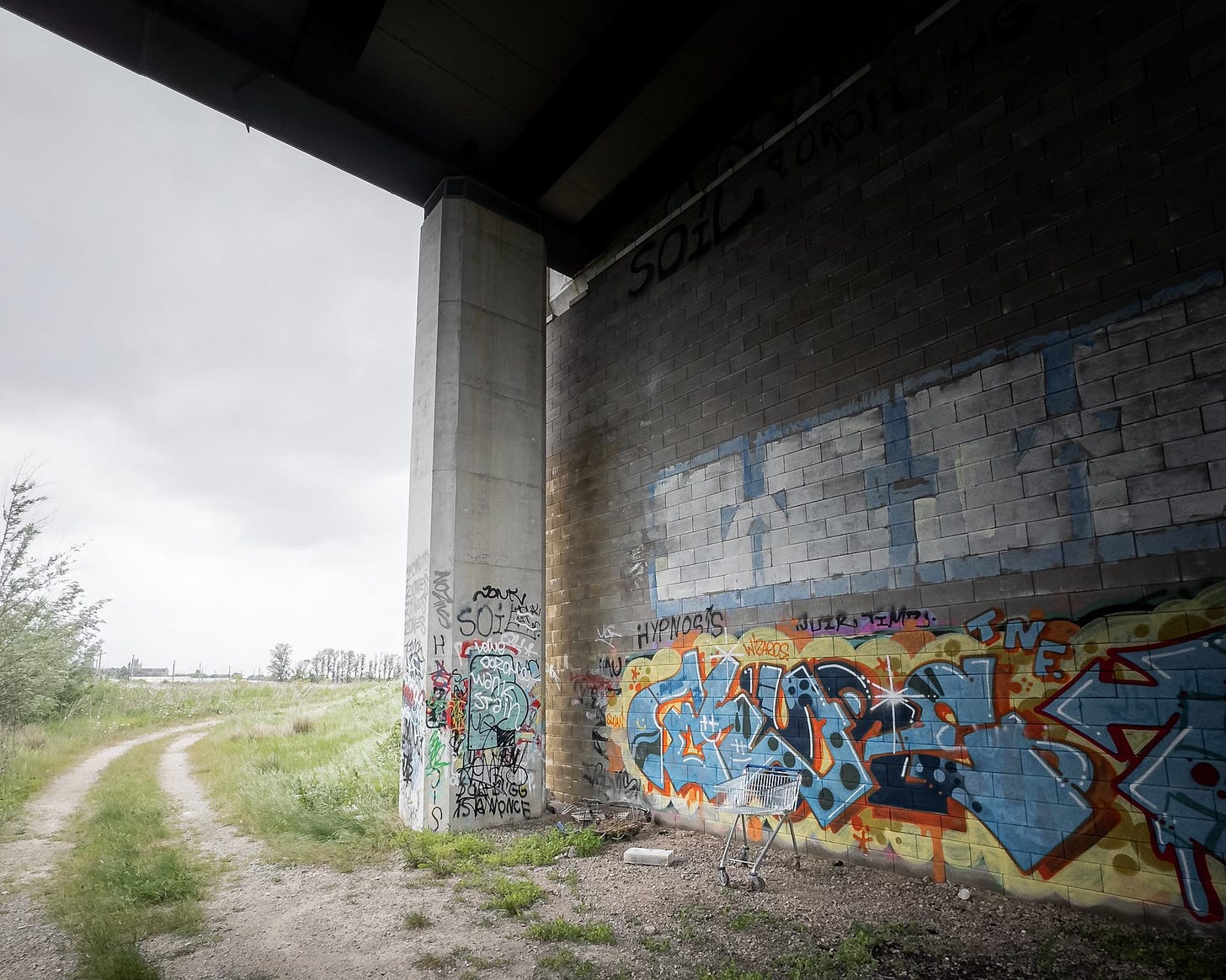From Breathless to Inspired: My Journey Into Moving Photography
How to maintain a consistent photography practice without adding extra time to your day and why your next great photograph might be hiding in your exercise routine.
The terms runography and cyclography originated from a chat in the comments of my weekly newsletters. It's not the first time someone commented on how I capture shots while training or racing. I joke about "an excuse to stop and catch my breath," but it's the first time I thought it might be a thing.
Photography has become a regular part of my training and racing routine and I've even been fortunate to have some of photos published. As I took my photography more seriously again, I was unknowingly using my fitness routine as practice.
Thus, runography and cyclography were born—the art of combining movement with image-making, where your legs become the vehicle for photographic exploration.
When Running Met Photography
My return to landscape photography didn't start in a camera shop or workshop. It began on the Ely running trails, where I'd stop to capture the beauty around me. That quiet Fenland sunrise or the mist over the river would make me stop mid-stride. Alone, I had no one to share it with, so the obvious answer was to take a photo and bring it home to share with my family.
Initially, these were just quick phone snaps—documentation of beautiful moments during runs. Gradually, I realised I was developing a different relationship with the landscape. Moving through the environment at running pace, or cycling along quiet fenland droves, revealed scenes and perspectives hidden to car exploration or got me further afield than a typical walk.
I was fascinated by the psychology of this approach. When you're out for exercise, photography becomes secondary—there's no pressure to return with the perfect shot. This removed the creative anxiety of dedicated photography trips - the need to capture the perfect image. Instead, any image is a bonus, a gift discovered while pursuing a different goal.
Building Sustainable Creative Habits
I had stumbled into a perfect example of habit stacking—the productivity concept of linking a new behaviour to an established routine. I was already committed to regular running and cycling for fitness. Adding photography to these activities required no additional time or motivation. The camera came along for the ride.
This solved a major challenge for amateur photographers: maintaining a consistent practice. I was photographing regularly as a natural byproduct of staying fit, rather than carving out dedicated photography time, which often falls victim to work or family pressures.
This system's beauty is its sustainability. Exercise is non-negotiable for my wellbeing, so photography became equally non-negotiable. Even on uninspired days, I'd head out with my camera because my body needed movement. Asphotography became key to my mental wellbeing, combining the two was a double shot of goodness for my body and soul.
The Sweet Spot of Exploration
Running and cycling opened up a different geography for my photography. On foot, you've a limited radius for comfortable exploration. By car, you can cover vast distances but remain restricted to roads and car parks. But running and cycling occupy a sweet spot between these extremes.
Suddenly, the intriguing paths visible from main roads became accessible. Bridleways an hour’s walk from the nearest car park were now within easy reach. The quiet back lanes through farmland—too narrow for comfortable parking but perfect for cycling—revealed treasure troves of photographic subjects.
I discovered abandoned buildings in fields, hidden behind hedgerows I'd never spot from a car. No need to find parking,just stop running or lay down your bike and explore. Rickety bridges carrying footpaths over drainage channels, invisible from any road. Solitary trees in vast Fenland fields, accessible via farm tracks that were impossible to drive but reasonable to cycle.
Movement changes how you see familiar landscapes. That church spire you drive past daily looks different when approached at a slower pace or from an unexpected angle via a footpath. The industrial estate that looks mundane from the ring road tells a different story when explored on foot on a quiet bank holiday morning.
Tools for the Moving Photographer
Given these advantages, you might wonder how to make this work in practice. I learned the hard way that stopping every few hundred metres to photograph something interesting makes for an inefficient training session. So I ensured my structured training session took place on familiar terrain, minimising the photographic distractions. I saved my explorative sessions for my longer leisurely sessions.
The iPhone became my tool of choice for running photography. I love listening to podcasts while I run, so it's always with me. It captures surprisingly good images in the right conditions and doesn't add weight or bulk that interferes with movement. The best camera is the one you have, and when running, that's your phone.
Cycling opened up more possibilities, as it’s easier to carry larger kit. A bag attached to the bike frame can carry a compact camera like the Ricoh GRiii. It can also fit into a cycling jersey’s back pocket. For larger gear, like my Sony A7c with a 24-105mm lens or my drone, a camera sling or small backpack works. The Wandrd Rogue Sling 6l is perfect. Its rugged design and comfortable harness make it ideal for cycling without carrying too much.
The Rhythm of Discovery
Over time, this practical approach led to an unexpected discovery. It offered a drip-feed of inspiration and subject matter, rather than intensive, focused sessions of dedicated photography trips. Each exercise session became a reconnaissance mission, building knowledge of the local area's photographic potential.
This approach suited my reactive photography style. Instead of researching and planning shots, I let the landscape reveal itself gradually. For longer rides, I’d scour maps for new areas to explore. Following an injury I’d drive to neighbouring villages to start my runs, allowing me to get further afield on foot until my fitness returned.
I began developing mental maps of locations worth revisiting with better equipment or in different conditions. The abandoned cottage that looked atmospheric in morning mist might be worth returning to during golden hour with a larger camera. The distant barn, inaccessible even on bike or foot, could be worth a visit with the drone. The geometric patterns of a modern industrial building glimpsed from the cycle path could be worth exploring on foot.
More Than Just Pictures
This reconnaissance approach benefited beyond location scouting. The promise of potential photographic discoveries made exercise sessions more enjoyable, particularly on low-motivation days. This practice deepened my connection to local landscapes. The Fens around Ely, once dismissed as uninteresting, revealed endless variety when explored at ground level, season by season and weather system by weather system.
The images captured this way might not always be technically perfect. Phone cameras have limitations, and stopping mid-exercise doesn't always allow for optimal composition or may have a sweaty lens. But they possess an immediacy and authenticity that planned photography lacks. They're honest documents of genuine discovery, captured in moments of enthusiasm.
Finding Your Own Rhythm
If this exercise and photography approach sounds interesting, the transition is simple. Oh and it doesn’t have to be running or cycling. Simply walking is sufficient.
Start with whatever camera you're comfortable carrying during exercise—usually your phone. Notice photographically interesting subjects on your usual routes, even if you don't stop to photograph them initially.
You'll learn which discoveries are worth interrupting your exercise rhythm and the difference between scenes that can be captured with your mobile camera and those needing a return visit with proper equipment.
Most importantly, resist the urge to turn every exercise session into a photography workshop. The magic of this approach lies in its casualness—photography enhances exercise rather than dominating it. Some days you'll find nothing interesting, and that's fine. The next run or ride might reveal something extraordinary.
The intersection of movement and image-making offers a sustainable, enjoyable way to maintain fitness and photographypractice. In our time-pressured lives, activities that serve multiple purposes aren't just efficient—they're essential.
Lace up your running shoes, pump up your bike tyres, and explore your local landscape at a different speed, with eyes open and camera ready. You might be surprised by what's been hiding in plain sight, just a run or ride away.
Have you found interesting photographic subjects while exercising? What equipment do you find works best for you, if you have a similar approach? I'd love to hear about your experiences combining movement with image-making in the comments.












A great pairing! Leading always to interesting output every week for your readers here. 🤩
Just this late morning we drove downtown in our EV to take our dog for a walk (cheaper than taking the train from our suburb into central Oslo) where we knew we could find shade from the buildings (it was supposed to heat up quickly).
When we were finished exploring that neighborhood and were driving down a busy city street to head home, I ended up behind three cyclists in proper gear that also included for each: cameras tucked into the back of their shirts. My better half noticed first and wondered why all 3 had cameras and I joked that maybe they were doing a triathlon (or in this case duathlon) but with cycling and shooting being the events.
And now I read your own personal story of how the camera is an integral part of your training…. So maybe I wasn’t far off????
I will say, I normally would’ve taken my “camera-camera” along today as I typically do when we go exploring neighborhoods on our “city dog walking” but the past few months I haven’t done that much as I almost burnt myself out shooting too much on my summer travels last year, plus fall and spring travels. But, I used to always take my crop-sensor outdated Sony with an 85mm lens on these walks (not true sporting exercise but we get in our steps 😉). I hope to get back into that mindset again in the future and your post might be the little nudge I need.
Great article! I’ve often wondered how often you stopped during your running and cycling sessions, to take a photo. - When I hike, I always have a camera with me. Sometimes I take many photos and sometimes I don’t take any. Still, sometimes, even though I have a camera with me, I only take photos with my phone. You’re so right about the discovery aspect of approaching photography this way. I often find myself in awe of the scene that unfolds in front of me.
The locations you run and cycle are stunningly beautiful! Is it all public land? When you approach abandoned buildings, is that land owned by anyone? I’m always a bit leery of doing that here, incase there’s an angry landowner around with a rifle. - I wish I was kidding but I live in the USA, so it’s a valid concern, unfortunately.